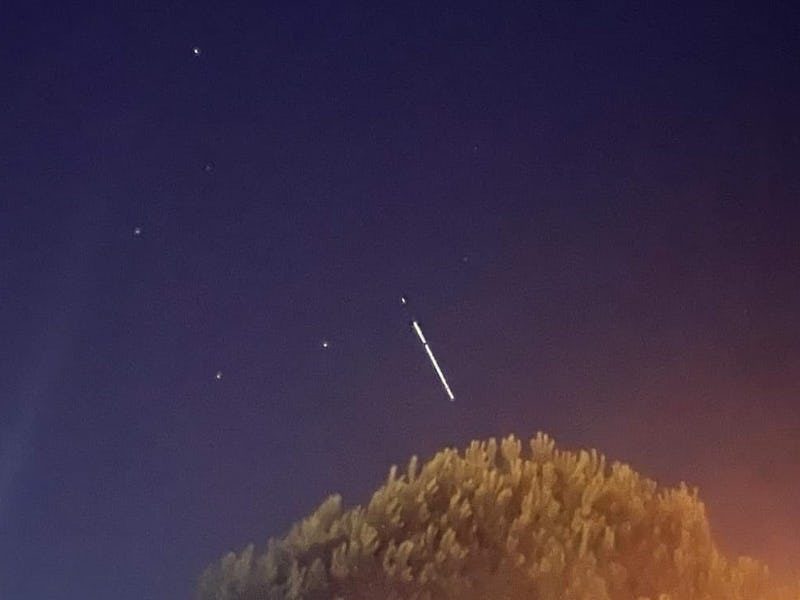SpaceX: Why Starlink has some astronomers worried
Of course, light pollution isn’t really anything new, and the problem predates Starlink.

The new generation of Starlink satellites remains above the accepted brightness threshold.
It’s one of the stranger sights of the modern Space Age. Recently, we found ourselves under the relatively dark skies of southern Spain. Sure enough, within a few minutes, we caught sight of a chain of flashing “stars” winking in and out of view in quick succession.
Starlink trains are now a familiar sight — the boon and bane of the modern era. While SpaceX’s mega-satellite promises to become a true disruptor in the worldwide Internet game, it also has the potential to add to the burden of light pollution in the night sky. Will there soon come a time in the not too distant future when moving artificial “stars” outnumber real ones?
The rise of Starlink
The problem for astronomers didn’t really become apparent until the first launch of 60 Starlink satellites in May 2019. To date, SpaceX has launched Starlink batches at a breakneck pace, with over 2,900 total deployed and 2,286 still in orbit and in service as of early August 2022. SpaceX ultimately wants to put 12,000 Starlinks in low Earth orbit (as currently approved by the Federal Communications Commission) with provisions for a possible 30,000 more. The Starlink Internet service went live in late 2020.
Unlike the nascent Iridium constellation — which really only found niche applications — Starlink is already proving its worth. For example, Starlink is currently keeping the Internet on in Ukraine during the ongoing Russian invasion.
Elon Musk discusses Starlink at the Mobile World Conference.
The main concern in professional astronomy is the impact on current and upcoming all-sky surveys, such as the Vera C. Rubin telescope. This survey will scour the sky nightly down to a faint +22nd magnitude. A recent article in Nature notes that the 1.5-meter Zwicky Transient Facility (ZTF) telescope at Palomar sees Starlink streaks on 18 percent of its deep-sky images. A recent International Astronomical Union statement called for operational Starlinks to fall below +7th magnitude.
Of course, light pollution isn’t really anything new, and the problem predates Starlink. The current problem many a stargazer has noticed is that despite mitigation efforts, the Starlink trains are still bright, especially on initial orbital deployment before they’re placed in higher operational altitudes.
Also, the attrition rate for Starlink seems pretty high: Already, 218 satellites have re-entered, including most of the Group 4-7 batch that fell prey to space weather shortly after launch in February 2022. SpaceX has carried a breakneck launch cadence in 2022, launching an amazing 21 batches thus far this year alone.
And there’s more to come. OneWeb has already deployed 218 satellites for its own constellation, though the Ukraine War has also stalled the worldwide launch campaign to get it operational by the end of 2022. Amazon’s Kuiper constellation will also begin deployment in late 2022/early 2023. Also, SpaceX has recently acquired Swarm’s Internet-of-Things satellites and filed to use 2Ghz band technology in the near future… Expect to see future Starlink terminals shrink and become more mobile, and possibly even become a built-in feature on future smartphones.
A recent report out of a Black Hat Security conference in Las Vegas also alerted users and SpaceX in to the possibility of hacking Starlink, though the company is already hard at work on patching this vulnerability.
Hopefully, Starlink won’t give any companies that have long wanted to place “ads in space” any ideas. We’ve already seen attempts to put artwork in space, courtesy of Orbital Reflector. Perhaps, the U.S. Department of Defense could lend a hand and reveal how the classified Lacrosse-5 satellite pulls a “vanishing act” on occasion. Or perhaps, artificial intelligence will simply find a way to identify and erase Starlink streaks in images. (Astrophotographers have already pioneered a similar technique to erase satellite streaks.)
To be sure, our personal opinion on the rise of the Starlink satellite constellation is nuanced. As an avid stargazer, I’ve seen the troubling trend of a brighter night sky lengthen drives to find dark sites long before the advent of mega-satellite constellations … but if I can live and work in remote rural Spain thanks to a mobile Starlink hookup, I see a definite advantage to those strange-moving satellite trains overhead.
This article was originally published on Universe Today by David Dickinson. Read the original article here.